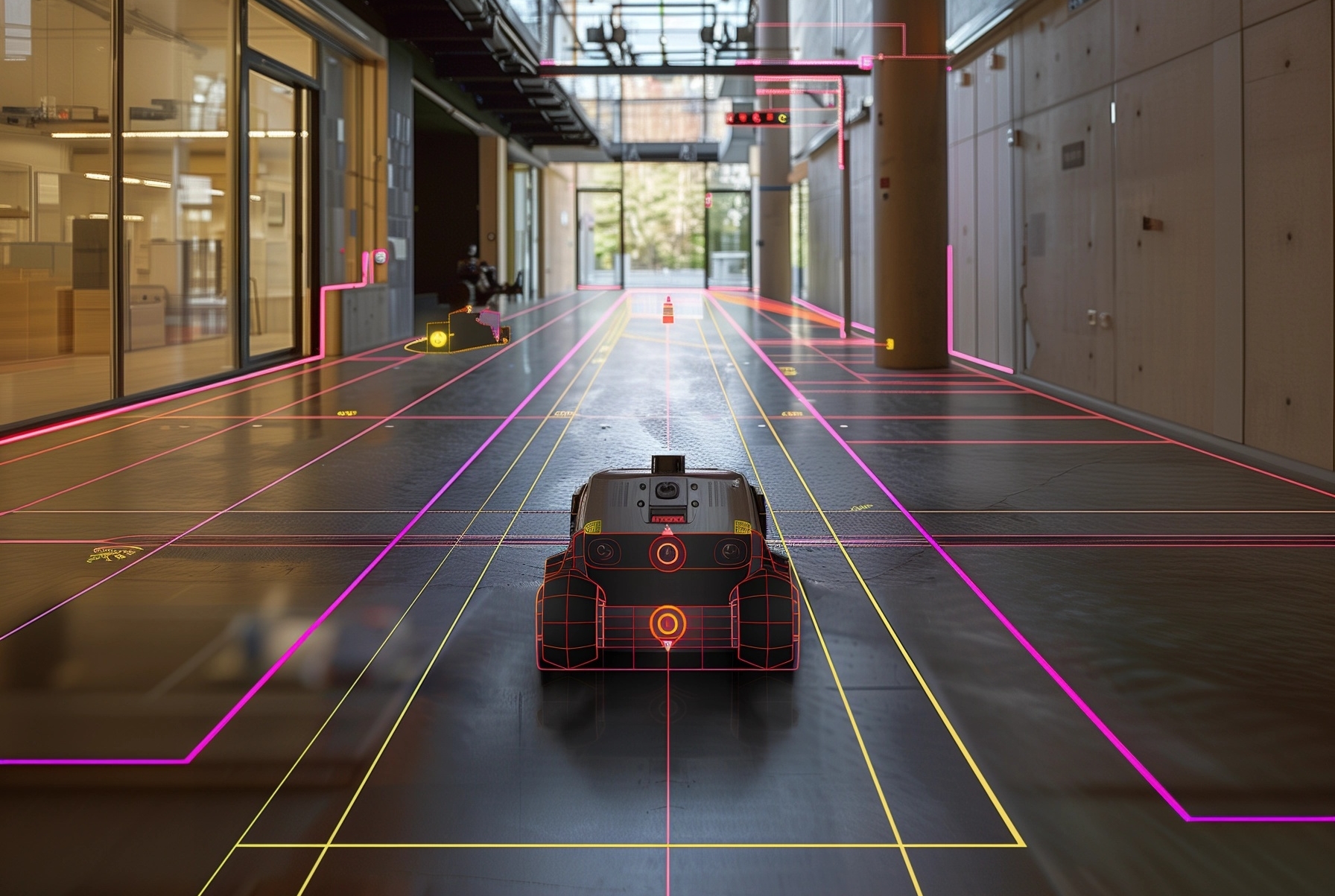Robot navigation is a fundamental aspect of robotics that enables machines to move around and interact with their environment in a safe and efficient manner. It involves the use of various sensors, algorithms, and control systems to guide a robot from one location to another, avoiding obstacles and adapting to changing conditions. The field of robot navigation has made significant progress in recent years, driven by advances in artificial intelligence, computer vision, and machine learning. In this article, we will provide an overview of the key concepts, techniques, and challenges in robot navigation, as well as its applications and future directions.

Types of Robot Navigation
There are several types of robot navigation, each with its own strengths and limitations. Some of the most common types include:
- Dead Reckoning: This method uses the robot’s internal sensors, such as odometry and gyroscopes, to estimate its position and orientation. Dead reckoning is simple and efficient but can accumulate errors over time, leading to inaccurate positioning.
- Landmark-Based Navigation: This approach uses visible landmarks, such as beacons or natural features, to guide the robot. Landmark-based navigation is more accurate than dead reckoning but requires a pre-defined map of the environment.
- Map-Based Navigation: This method uses a pre-built map of the environment to guide the robot. Map-based navigation is more accurate and efficient than landmark-based navigation but requires a detailed and up-to-date map.
- Sensor-Based Navigation: This approach uses various sensors, such as lidar, radar, and cameras, to perceive the environment and guide the robot. Sensor-based navigation is more flexible and adaptive than map-based navigation but can be computationally intensive.
Techniques Used in Robot Navigation
Several techniques are used in robot navigation, including:
- Simultaneous Localization and Mapping (SLAM): SLAM is a technique that enables a robot to build a map of its environment while simultaneously localizing itself within that map. SLAM is widely used in autonomous vehicles, drones, and robots.
- Machine Learning: Machine learning algorithms, such as reinforcement learning and deep learning, are used to improve the accuracy and efficiency of robot navigation. Machine learning can be used to learn from sensor data, adapt to changing conditions, and optimize navigation policies.
- Computer Vision: Computer vision is used to perceive and interpret visual data from cameras and other sensors. Computer vision can be used to detect obstacles, recognize landmarks, and track the robot’s position and orientation.
- Control Systems: Control systems, such as proportional-integral-derivative (PID) controllers, are used to regulate the robot’s motion and maintain stability. Control systems can be used to control the robot’s speed, acceleration, and direction.
Applications of Robot Navigation
Robot navigation has a wide range of applications, including:
- Autonomous Vehicles: Autonomous vehicles, such as self-driving cars and drones, rely on robot navigation to safely and efficiently navigate through their environment.
- Industrial Robotics: Industrial robots use navigation systems to move around factories and warehouses, perform tasks, and avoid collisions.
- Service Robotics: Service robots, such as home robots and healthcare robots, use navigation systems to interact with their environment and provide assistance to humans.
- Space Exploration: Space robots, such as rovers and landers, use navigation systems to explore and map planetary surfaces.
Challenges in Robot Navigation
Despite significant advances in robot navigation, there are still several challenges that need to be addressed, including:
- Perception and Sensing: Robust and reliable perception and sensing are essential for robot navigation. However, sensors can be noisy, and the environment can be complex and dynamic.
- Mapping and Localization: Building and maintaining accurate maps of the environment is a challenging task, especially in dynamic and changing environments.
- Motion Planning: Motion planning involves finding a safe and efficient path for the robot to follow. However, motion planning can be computationally intensive, and the robot may need to adapt to changing conditions.
- Human-Robot Interaction: Human-robot interaction is critical in many applications, such as service robotics and autonomous vehicles. However, ensuring safe and efficient interaction between humans and robots is a challenging task.
FAQ
- Q: What is robot navigation?
A: Robot navigation is the process of guiding a robot from one location to another, avoiding obstacles and adapting to changing conditions. - Q: What are the different types of robot navigation?
A: The different types of robot navigation include dead reckoning, landmark-based navigation, map-based navigation, and sensor-based navigation. - Q: What is SLAM?
A: SLAM (Simultaneous Localization and Mapping) is a technique that enables a robot to build a map of its environment while simultaneously localizing itself within that map. - Q: What are the applications of robot navigation?
A: The applications of robot navigation include autonomous vehicles, industrial robotics, service robotics, and space exploration. - Q: What are the challenges in robot navigation?
A: The challenges in robot navigation include perception and sensing, mapping and localization, motion planning, and human-robot interaction.
Conclusion
Robot navigation is a fundamental aspect of robotics that enables machines to move around and interact with their environment in a safe and efficient manner. The field of robot navigation has made significant progress in recent years, driven by advances in artificial intelligence, computer vision, and machine learning. However, there are still several challenges that need to be addressed, including perception and sensing, mapping and localization, motion planning, and human-robot interaction. As robotics continues to evolve and become more pervasive in our daily lives, the development of robust and efficient navigation systems will be critical to enabling robots to safely and effectively interact with their environment.
Closure
Thus, we hope this article has provided valuable insights into Introduction to Robot Navigation. We thank you for taking the time to read this article. See you in our next article!
